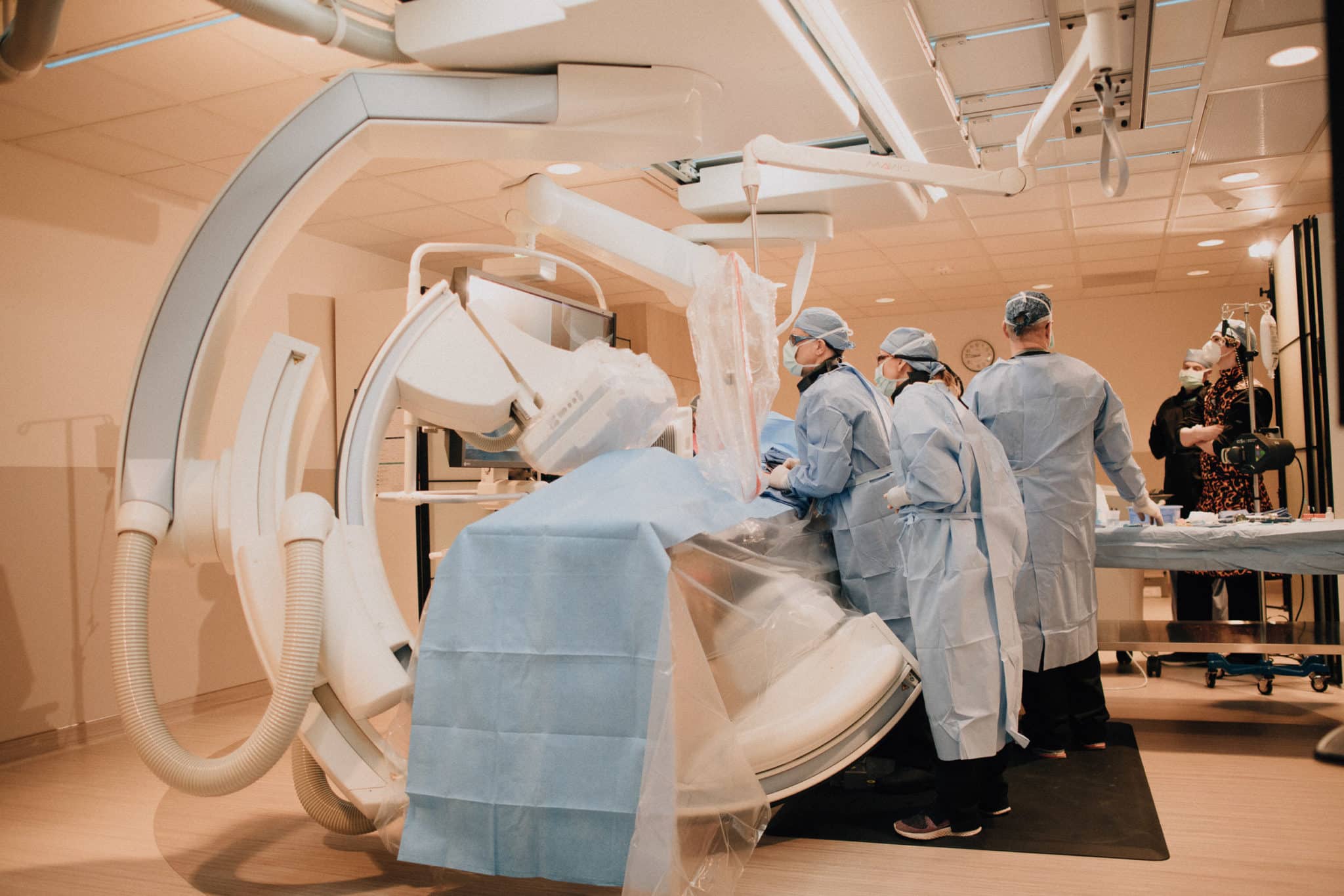
UTERINE FIBROID EMBOLIZATION (UFE)
ALTERNATIVE TO HYSTERECTOMY
– Keep your uterus
– Non-surgical treatment – IV sedation
– Menstrual flow returns to normal
– Significant reduction in size of the fibroids
– Pelvic pain and pressure are relieved
– Urinary frequency decreases
See why more women are choosing Uterine Fibroid Embolization over hysterectomy surgery to treat uterine fibroids.
MINIMALLY INVASIVE
With a very small incision, leave with just an adhesive bandage.
FASTER RECOVERY
Normal activity usually able to be resumed within 1-2 weeks.
LOWER RISK THAN SURGERY
Intravenous sedation – no general anesthesia needed.
MEET THE SPECIALISTS TO THE SPECIALISTS

MICHAEL CUMMING, MD
Dr. Cumming is a nationally-recognized expert in varicocele and prostate artery embolization. His embolization techniques have been presented at the Global Embolization (GEST) meeting.

PETER BRETZMAN, MD
Dr. Bretzman has over 25 years of experience solving complex medical problems using minimally invasive imaging guided techniques. His focus is finding the most efficient solution for patients.
UNDERSTANDING KYPHOPLASTY AND VERTEBROPLASTY PROCEDURES
Fibroids are benign, non-cancerous growths within or on the muscular walls of the uterus. Some may be as small as a pea, while others can be as large as a cantaloupe. Over half of women (57%) do not think they are at risk for development of uterine fibroids.¹ Research has shown that 70% of White women and 84% of Black women will develop uterine fibroids by the time they are 49 years old.
Increased risk factors include:
- Obesity
- High blood pressure
- Vitamin D deficiency
- Race (especially prevalent in Black women)
- Nulliparity (never carried a pregnancy beyond 20 weeks)
- Family history of fibroids
Some women may have no symptoms. For others, the physical effects and bleeding can be debilitating. Uterine fibroids diagnosis can be confirmed by using ultrasound screening and MRI scan.
Symptoms may include:
- Pelvic pain and pressure
- Heavy menstrual bleeding
- Menstrual cramping
- Abdominal pain
- Bloating
- Pain during or after intercourse
- Pain down the back of one or both legs
- Constipation
- Urge to urinate frequently
Schedule an evaluation with VIE to determine the best treatment options for you. Of women diagnosed with uterine fibroids, 1 in 5 believe hysterectomy to be the only treatment option.³ However, some hysterectomies may not be necessary due to well-established treatment options such as Uterine Fibroid Embolization (UFE).
- Uterine Fibroid Embolization (UFE)
- Medication
- Myomectomy
- Hysterectomy
- Magnetic resonance-guided focused ultrasound ablation (MRgFUS)
- Laparoscopic ultrasound-guided radiofrequency ablation
- Keep your uterus
- Non-surgical treatment
- Intravenous sedation – no general anesthesia
- Fast recovery – most women are back to normal activity in 1-2 weeks
- Leave with just an adhesive bandage
- Menstrual flow returns to normal
- Pelvic pain and pressure are relieved
- Urinary frequency decreases
- Significant reduction in size of the fibroids
IS UFE AN ALTERNATIVE TO SURGERY?
Yes! UFE is an alternative to surgery and has been performed for over 20 years. UFE successfully eliminates or significantly improves fibroid-related symptoms in approximately 90% of women, and the recovery period is significantly shorter than surgical procedures.⁴ While no procedure is completely risk-free, complications from UFE are rare and most patients are back to normal activity in 1-2 weeks.
Dr. Cumming and Dr. Bretzman will partner with you and/or your existing care team (ex: primary care, OB-GYN) to determine if you’re a candidate for UFE.


HOW IS UFE PERFORMED AND AM I A CANDIDATE?
We often remind patients that if they are a candidate for a myomectomy or hysterectomy, then they are a candidate for UFE.
Intravenous sedation enables sleep during the procedure without general anesthesia. A catheter is inserted into an artery through a tiny pinhole via the groin or wrist, then guided via real-time X-rays to the specific artery supplying blood to the fibroids. Particles are injected through the catheter, blocking the blood supply to the fibroids and making them shrink. Once the embolization (particle injection) is complete, the catheter is gently removed.
HERE'S WHAT YOU CAN EXPECT FROM YOUR VISIT:
- CONSULTATION: Symptom review and health history discussion.
- IMAGING: Ultrasound screening & MRI scan to accurately determine the specific location and size of fibroids.
- TREATMENT PLAN: A comprehensive review of all symptoms, exams and imaging enable Drs Cumming and Bretzman to provide definitive treatment recommendations. Ultimately, patients choose their preferred option.

